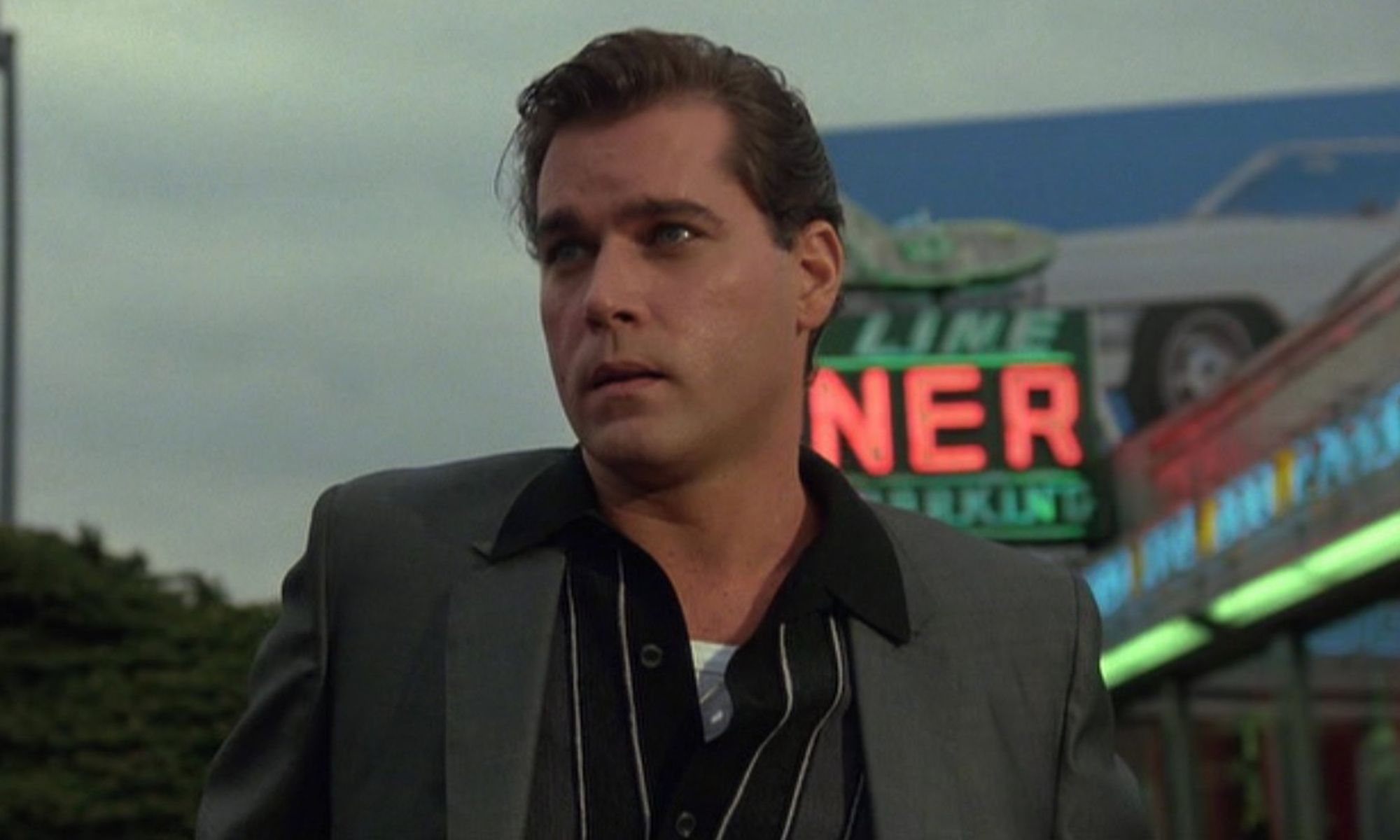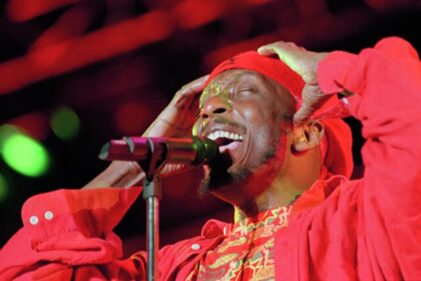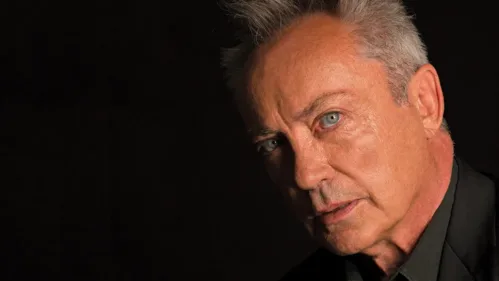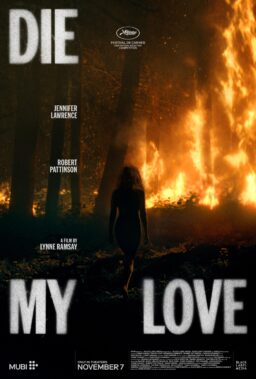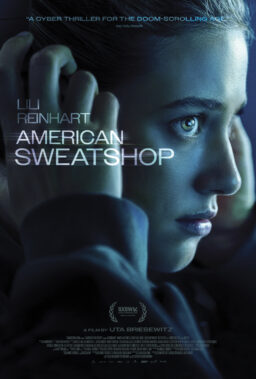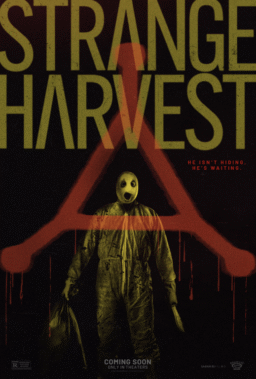You cannot throw a rock five feet from anywhere without hitting someone who thinks “Goodfellas” is one of the best movies ever made. They will regale you for hours with descriptions of their favorite scenes like Henry Hill pistol whipping that preppy boy, or Henry and Karen’s trip to the Copacabana. Just a few weeks ago on May 11th, there were numerous tweets of the film’s most famous title card, the one that advertises my tenth birthday and prefaces Henry Hill’s paranoid, coke-and-helicopter-fueled downfall. Even Glenn Kenny, my colleague here on this site, wrote a book about the movie.
Though there is praise for Marty and Thelma, De Niro, Pesci and Bracco, I doubt you’ll find anyone who would not agree that the glue that holds “GoodFellas” together is Ray Liotta. It was a purpose he served on more than one movie, and he was very good at it. So, today is a sad day. While on location shooting a film in the Dominican Republic, Ray Liotta passed away. He was 67 years old.
When I heard of news, my first thought wasn’t “GoodFellas.” My mind doesn’t work that way. The first thing that popped in my head was Liotta, completely out of his mind with rage, singing “Buffalo girls, won’t you come out tonight!” while he set Lauren Holly’s plane on fire in 1997’s “Turbulence.” This is not a good movie by any measure—it may be the worst thing Liotta did—but that scene stuck in my head all these years for its sheer, malevolent ridiculousness. Here was an actor, who had proven his gift for menace several times over by this point, taking a page from Nicolas Cage and shamelessly embracing his inner wacko. After singing and setting the fire, Liotta sits in his plane seat and mutters “they said this was a non-smoking flight!” Sue me, but my trash-loving heart wants what it wants.
Ray Liotta was a master of entrances. I know that sounds dopey—every player has their entrances and their exits, as per the Bard—but Liotta crafted some unforgettable ways into a scene. Think about Henry and Karen’s visit to the Copacabana, with Scorsese’s camera following Liotta as he seduces Karen while simultaneously being seduced by the criminal life. Or his first line in that same film, the beginnings of perhaps the greatest feat of cinematic narration ever recorded: “As far back as I can remember, I’ve always wanted to be a gangster.” The way he sells that pitch-black punchline sets the film’s tone.
Kevin Costner, the man who would become persona non grata amongst the “GoodFellas” faithful in terms of the 1991 Oscars, facilitated Liotta’s entrance in 1989 by building that mythical baseball diamond in a corn field in “Field of Dreams.” Liotta played Shoeless Joe Jackson, the shamed Chicago White Sox player who shows up to play baseball and make grown men cry in the theater. It seems that everyone involved knew they were in a ripe ol’ piece of corn except Liotta, who refuses any sentiment, delicately balancing things out in the process. Look at the scene near the end of the film, where he tells Costner’s Ray Kinsella that he’s not invited to go with him and the other players. “You’re not invited, Ray,” he says, and you can hear the stern intimidation in his voice. A few beats later, he responds to James Earl Jones’s comic line with a knowing, charm-filled smirk. It’s one of my favorite images of Liotta, proof that he could switch between menace and charm with ease.
The best role where he employed this switch also contains his most memorable entrance. In Jonathan Demme’s 1986 film “Something Wild,” Liotta’s first appearance is so powerful it changes the film’s tonal DNA. He’s the villain, or perhaps he’s the punishing piper who must be paid for the loose, privileged bacchanalia that Melanie Griffith’s Lulu and Jeff Daniels’ Charlie had enjoyed throughout the first half of the film. Keith Uhlich described this scene best, writing “in the high school reunion scene, when Ray Liotta’s psycho ex-boyfriend Ray Sinclair literally waltzes into frame and [Tak] Fujimoto’s lighting scheme suddenly shifts in consonance with the minor-key turn of The Feelies’ live musical accompaniment, I never fail to shiver.”
Demme gives Liotta an equally memorable exit, starting with one of his patented close-ups, this one of the actor after he’s been stabbed. Liotta plays this scene, pardon the pun, to the hilt, with a mixture of shock, surprise, disgust, and regret. This was the movie that put him on Scorsese’s radar and announced him to Hollywood as an actor whose gifts were just being tapped and discovered. Full disclosure forces me to reveal my intense dislike for “Something Wild,” primarily because I found its leads so distasteful that I wanted Liotta to kill them, but that just reinforces how good he is in the movie.
Liotta’s most recent triumph, barring the films he has in the can that haven’t been released yet, is in Noah Baumbach’s “Marriage Story.” Laura Dern deservedly got all that praise, but Liotta is just as good as she is as her competitor in divorce court. Their constant battles are a highlight, but so are his scenes with Adam Driver. Throughout, Liotta is as charming as he is terrifying, all while knowing that the joy of his character comes from the verbal hunt that will hopefully earn him a righteous kill.
There are many more performances I could list, from his excellent, underrated work in the George V. Higgins adaptation, “Killing Them Softly” to his stunning support of an equally good Sly Stallone in “Cop Land.” Or “Article 99,” a movie for which I have some affection even though it’s not very good. I could even bring up some of his trashier roles like “Operation Dumbo Drop,” “Unlawful Entry,” or the camp classic that is Pia Zadora’s “The Lonely Lady.” Hell, he co-starred with the Muppets twice, which would be enough to sell me even if I hadn’t already been sold on his excellence. He left behind several gems to be discovered over a nearly 40-year career.
As far back as I can remember, Ray Liotta has always been memorable, and he will be missed. Rest in peace.

